Welcome back extended range players! In this episode we’re checking out the three-note-per-string melodic minor modes for 7 string guitar, tuning BEADGBE. We’ll also outline some theory for the melodic minor modes so you’ve got basic understanding of their application.
In metal, melodic minor and its modes are widely disregarded and rarely considered for songwriting, however it can yield some amazing dissonant results and open up entirely new ideas. Even more creative ideas can be unleashed if you combine these with the intervallic Pentatonics of Melodic Minor. Let’s check out the Melodic Minor Modes for 7 string so we can add them to our modal arsenal!
7 String Melodic Minor Modes
To get the most mileage from these modes you need to know your positions and how these buy you more shred in a smaller space. Let’s get into it!
7 String Melodic Minor Harmony
As with any scale & mode, it’s helpful to know what chords, arpeggios and pentatonics each scale will yield and what chord types can be built from each note of the scale. There will be many chord types available from each note, especially when harmonising with extensions in mind. Knowing this will open up your possibilities for soloing and improvisation.
Melodic Minor Interval Structure:
R – 2 – m3 – p4 – p5 – 6 – 7
The most common Melodic Minor harmony is as follows:
1) Minor Major 7 – (R, b3, 5, 7)
2) Minor 7 – (R, b3, 5, b7)
3) Augmented Major 7 – (R, 3, #5, 7)
4) Dominant 7b5 – (R, 3, b5, b7)
5) Dominant 7#5 – (R, 3, #5, b7)
6) Minor 7#5 – (R, b3, #5, b7)
7) Augmented 7 – (R, 3, #5, b7)
7 String Melodic Minor Modes: The Positions on the Neck
Let’s get into the 3nps shapes for these modes. Here we go!
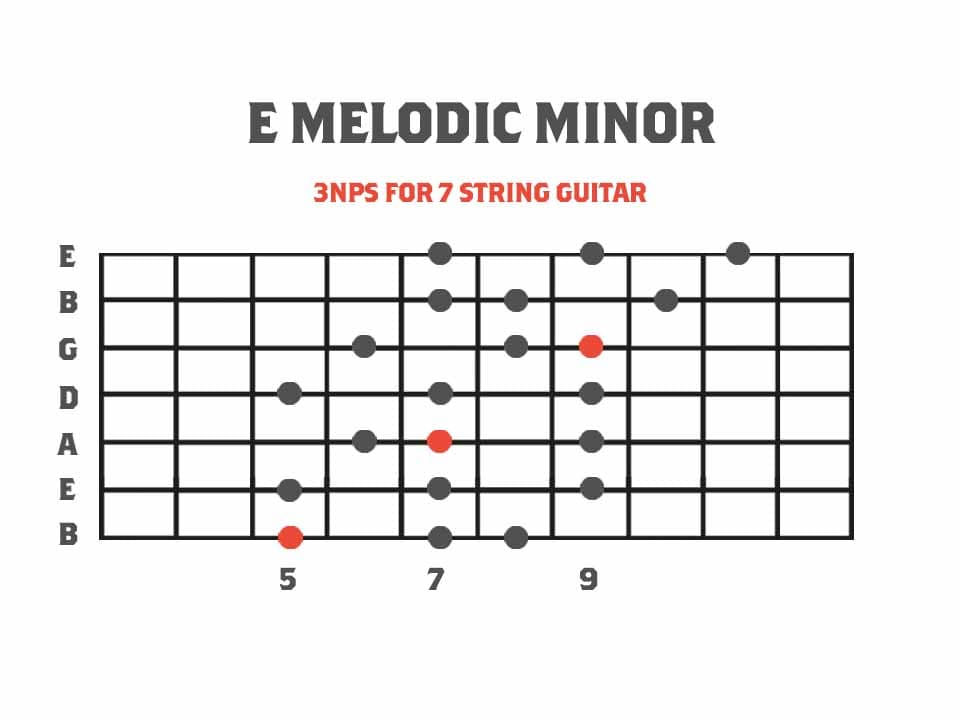
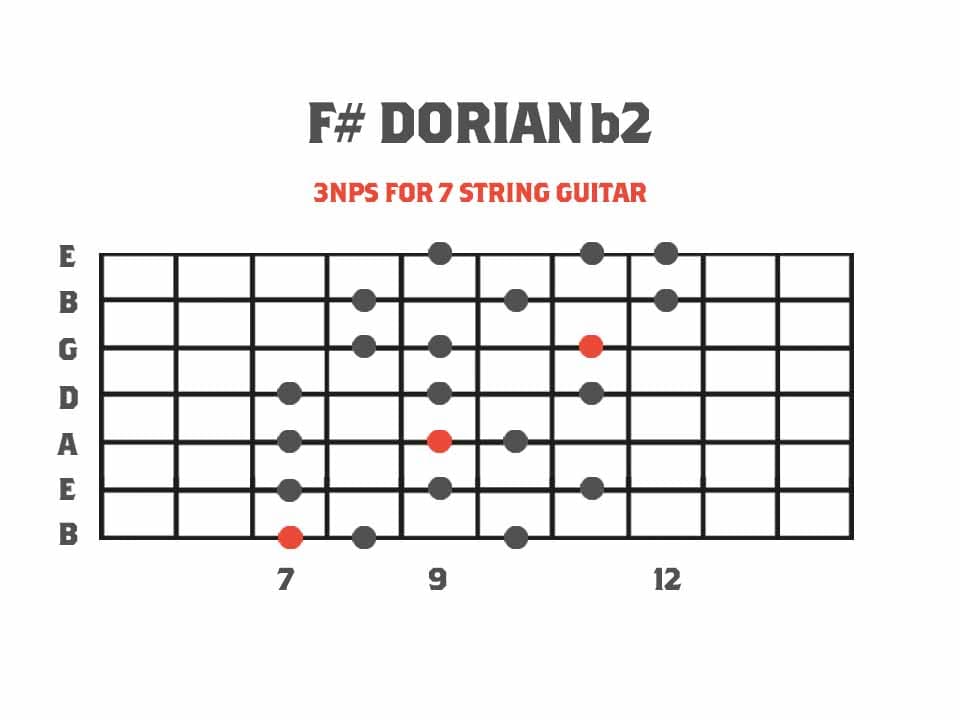
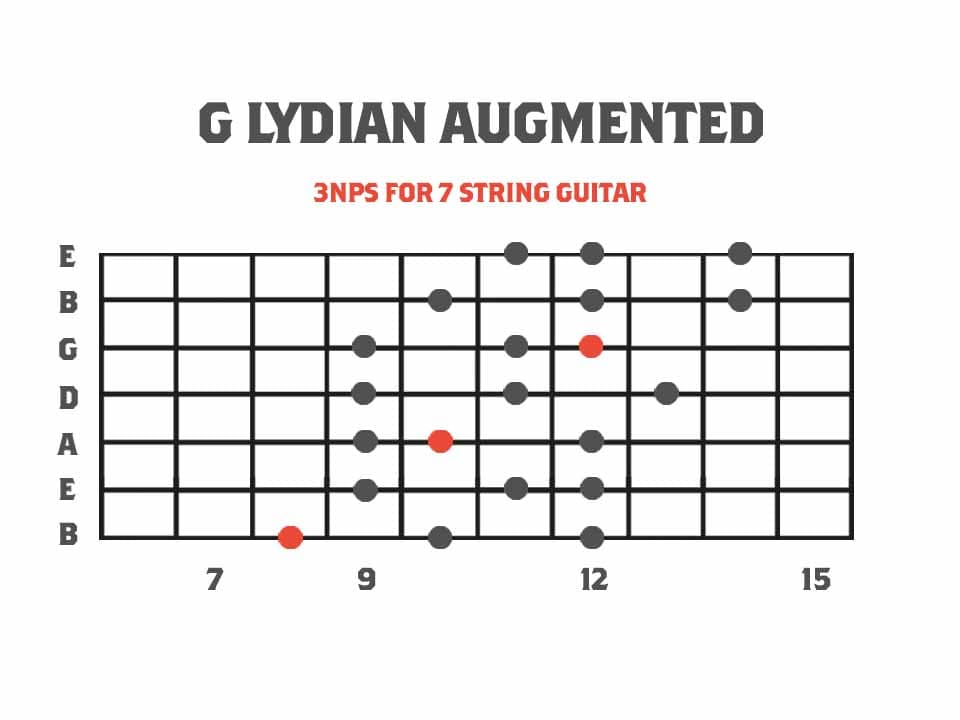
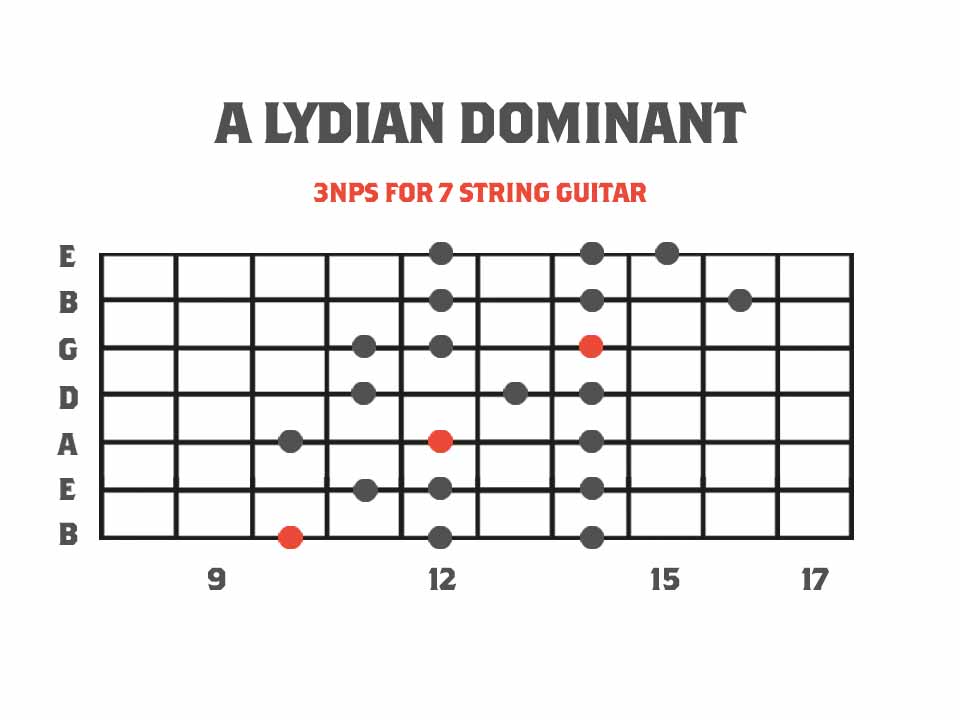
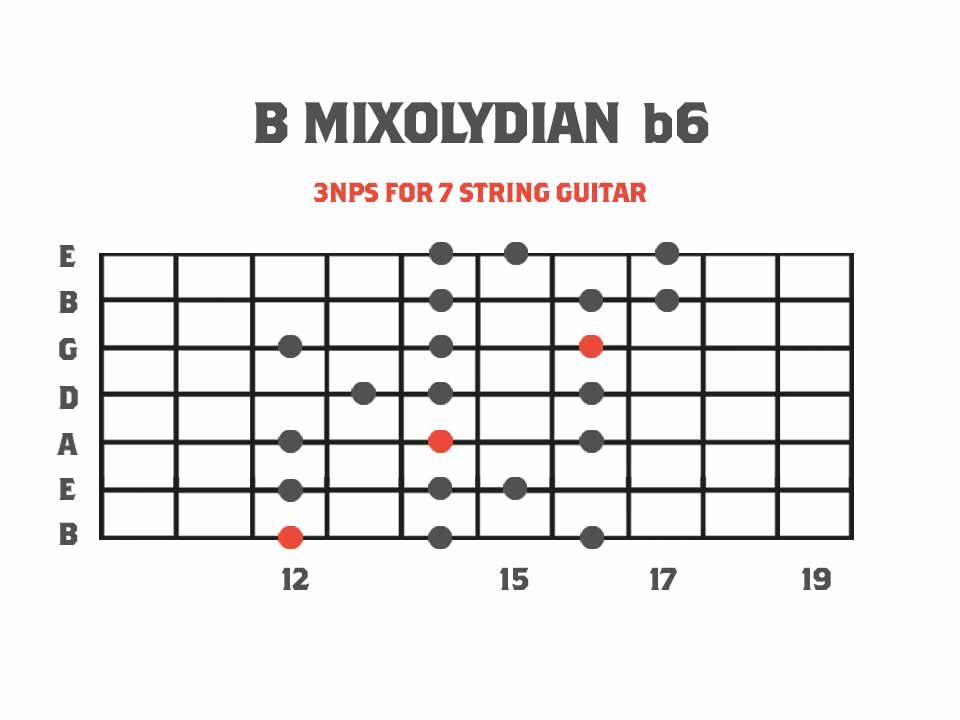
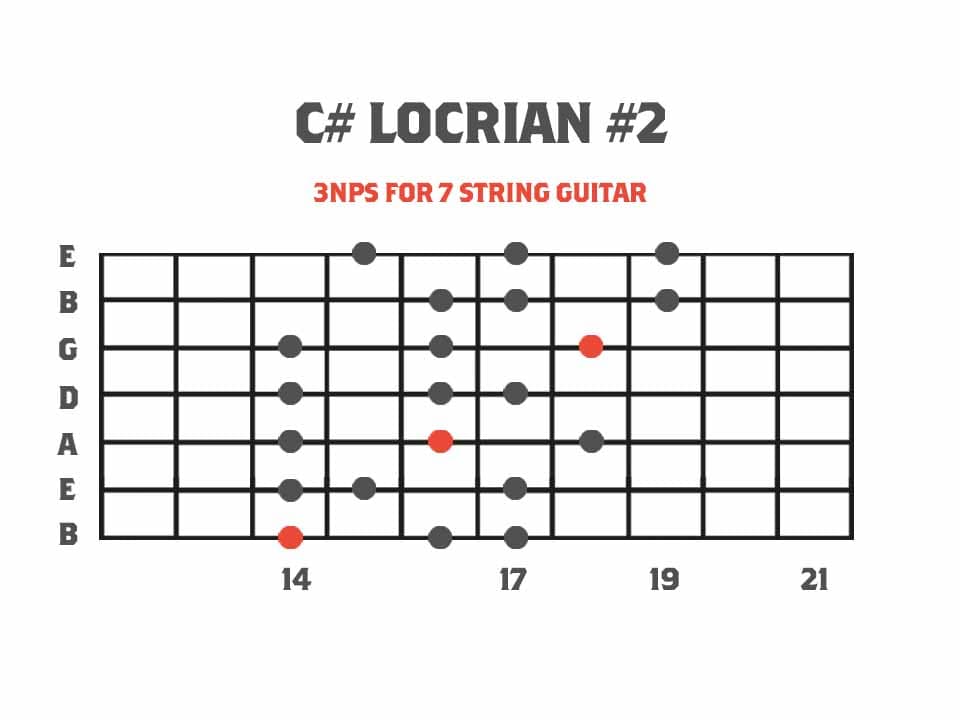
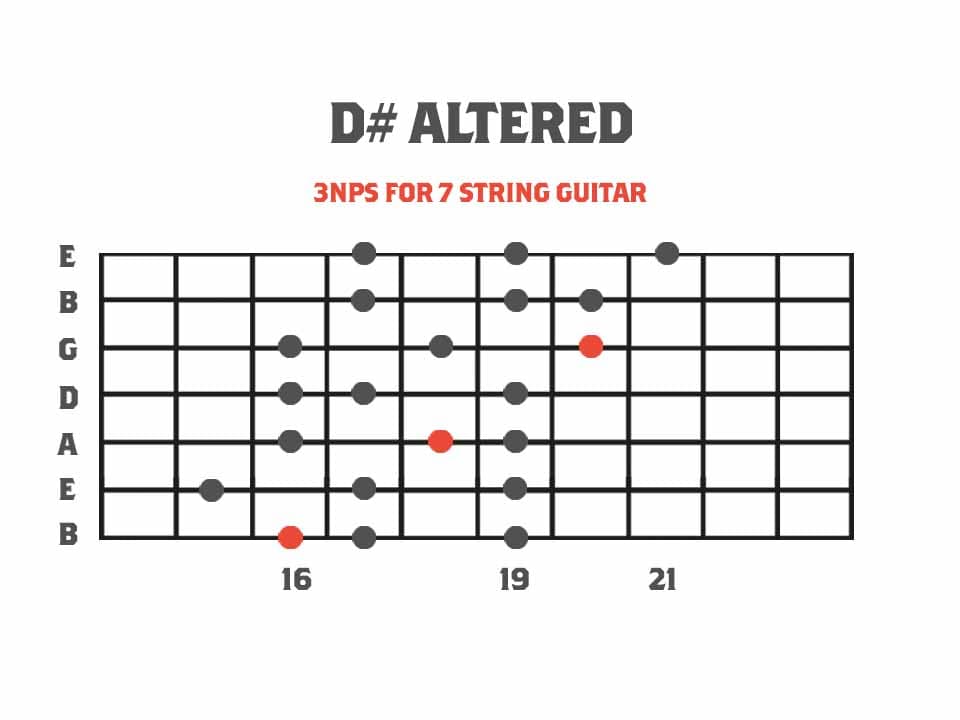
More Bang for Your Buck!
If you’re using a 7 string guitar you’ll quickly notice that you can do more in a single position with your modes. A single position 3nps shape covers 3 octaves, compared to a 6 string guitar, a 3 octave shape would span a much larger chunk of the neck. See below:
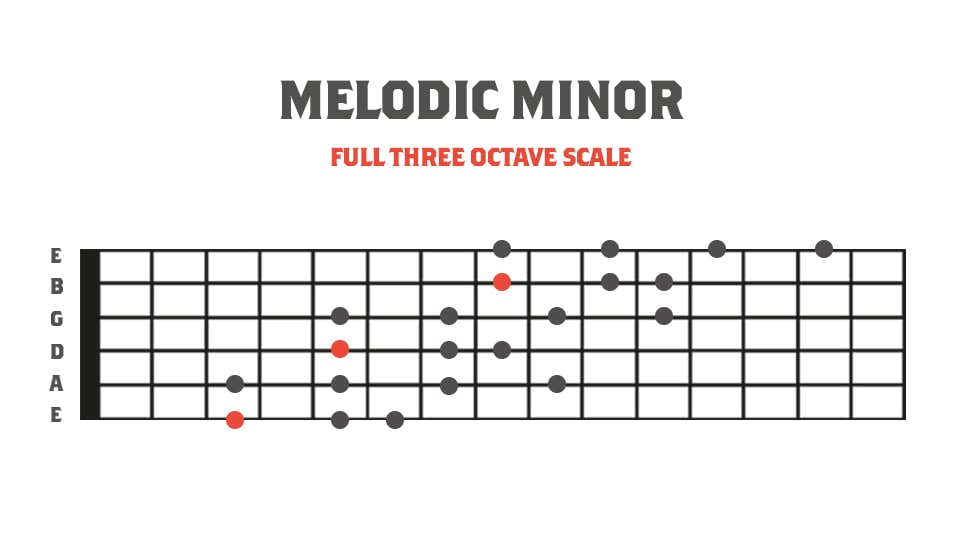

Referencing the 6 String Shapes
If you started on a 6 string guitar and moved to a 7 string this will be helpful. You can reference the shapes you might already know for the 6 string guitar versions. Just make sure you notice that when you take them down onto the low B string the root note has moved for each mode and they are no longer their 6 string counterpart. See the below example with the parent melodic minor scale.
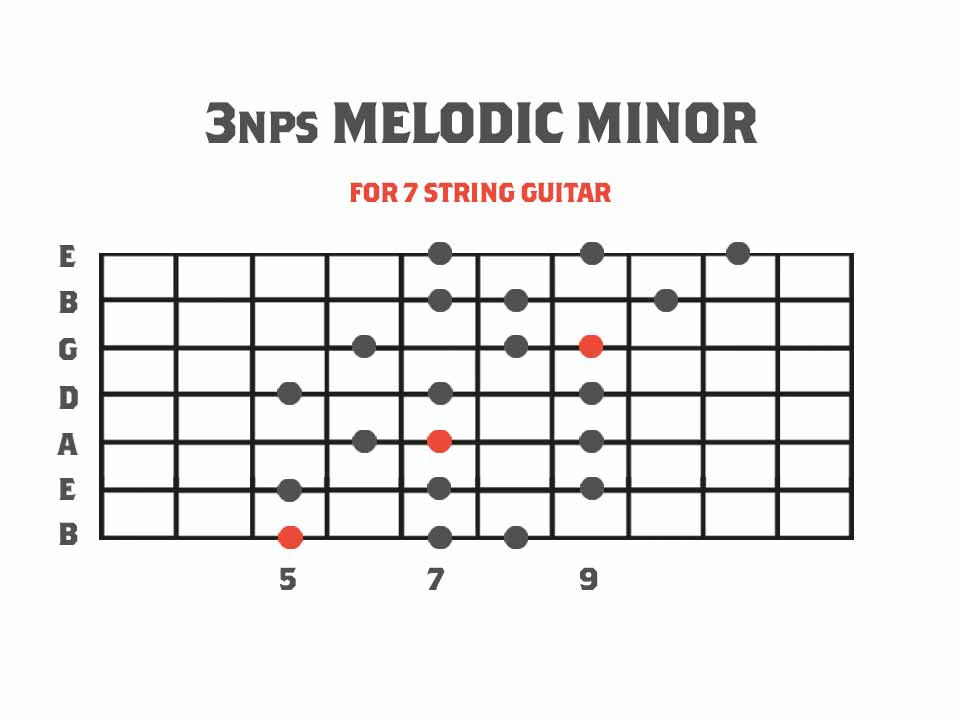
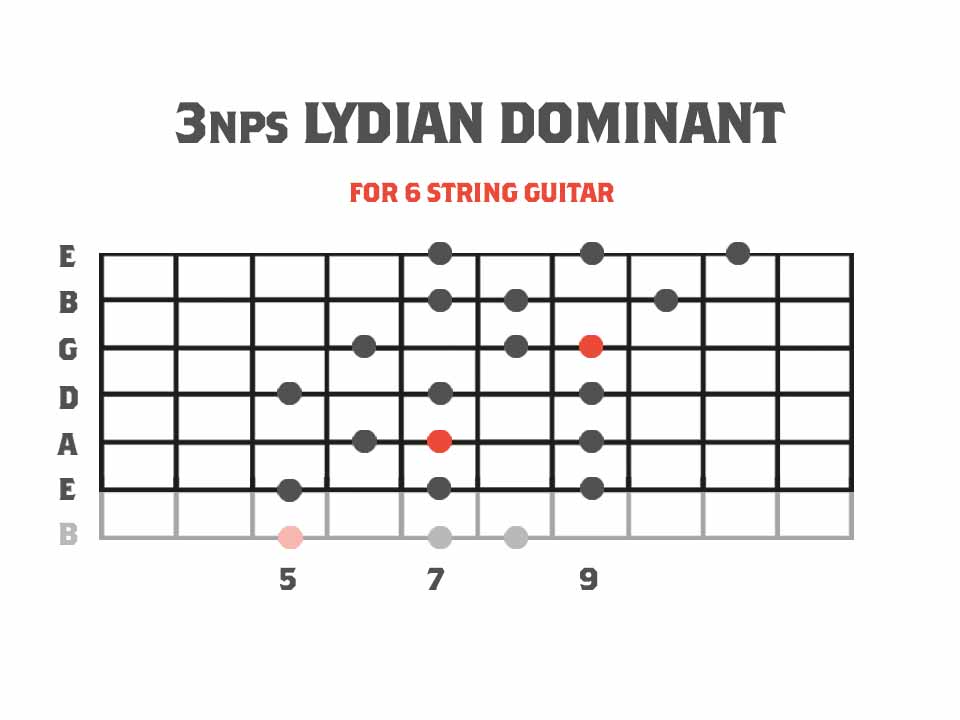
Melodic Minor on a 7 String references 6 String Lydian Dominant
Dorian b2 on a 7 String references 6 String Mixolydian b6
Lydian Augmented on a 7 String references 6 String Locrian #2
Lydian Dominant on a 7 String references 6 String Altered
Mixolydian b6 on a 7 String references 6 String Melodic Minor
Locrian #2 on a 7 String references 6 String Dorian b2
Altered on a 7 String references 6 String Lydian Augmented
Further Study: The Pentatonics of Melodic Minor
These unique and unusual pentatonics offer a far wider interval structure and a really exotic sound. We’ve found these to inspire many solos and creative riffs & ideas. If you know both the Melodic minor modes and the melodic minor pentatonics you’re massively opening up your options for new ideas.
In this multi level lesson we cover the 5 positions of the pentatonics of the melodic minor scale. This includes 5 positions of both the major b6 pentatonics and the minor b5 pentatonic as well as some multi-octave & advanced concepts and advanced theory and application.
Here’s one of each type to get you started!
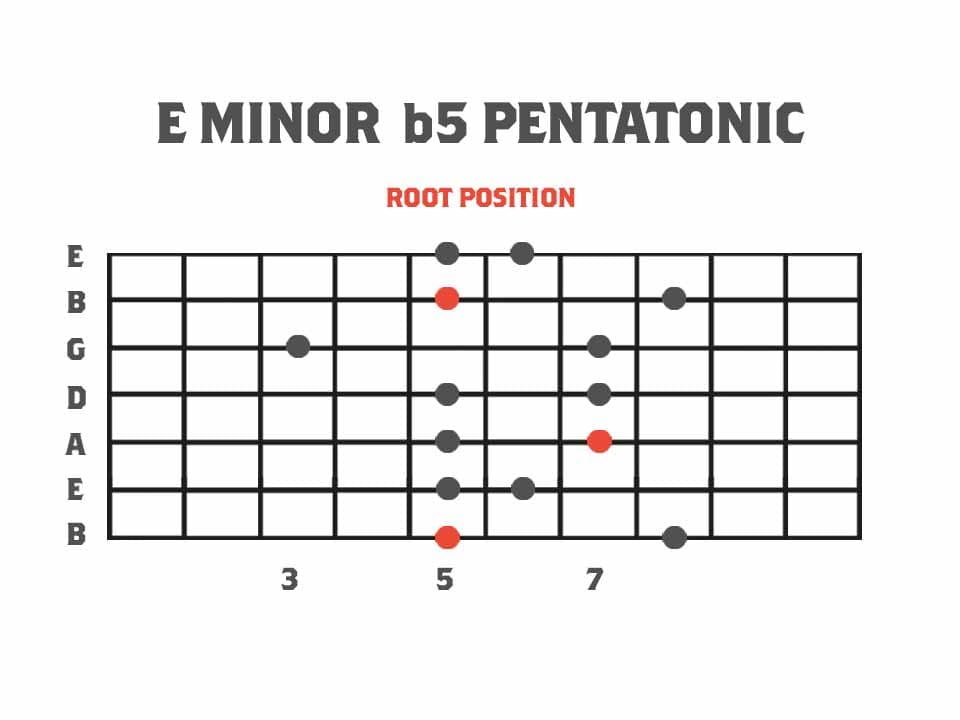

Footnote: We’re massive fans of Rick Beato

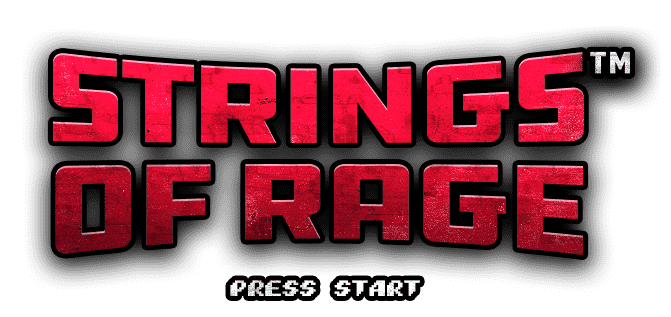
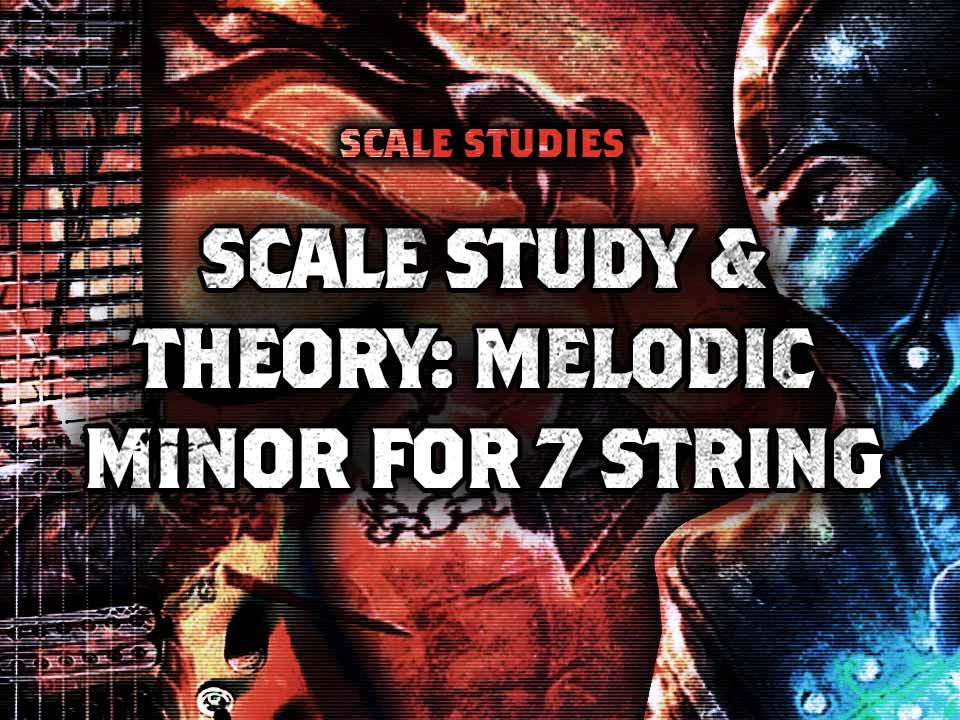
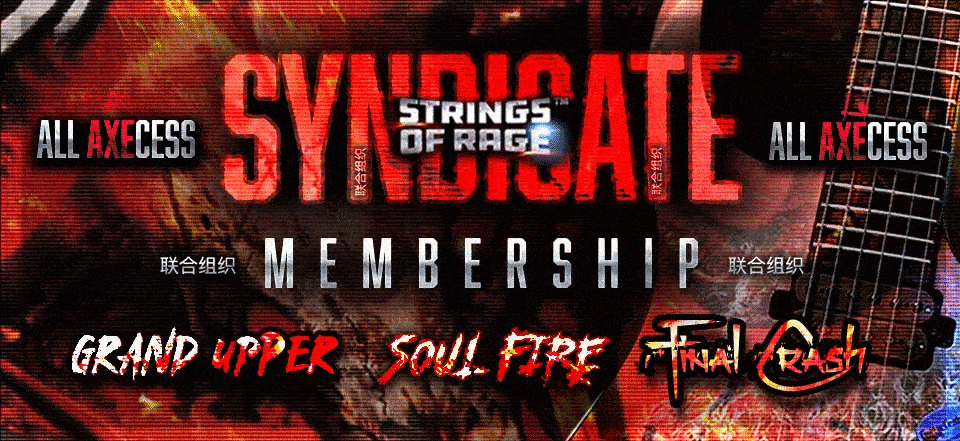






No Comment